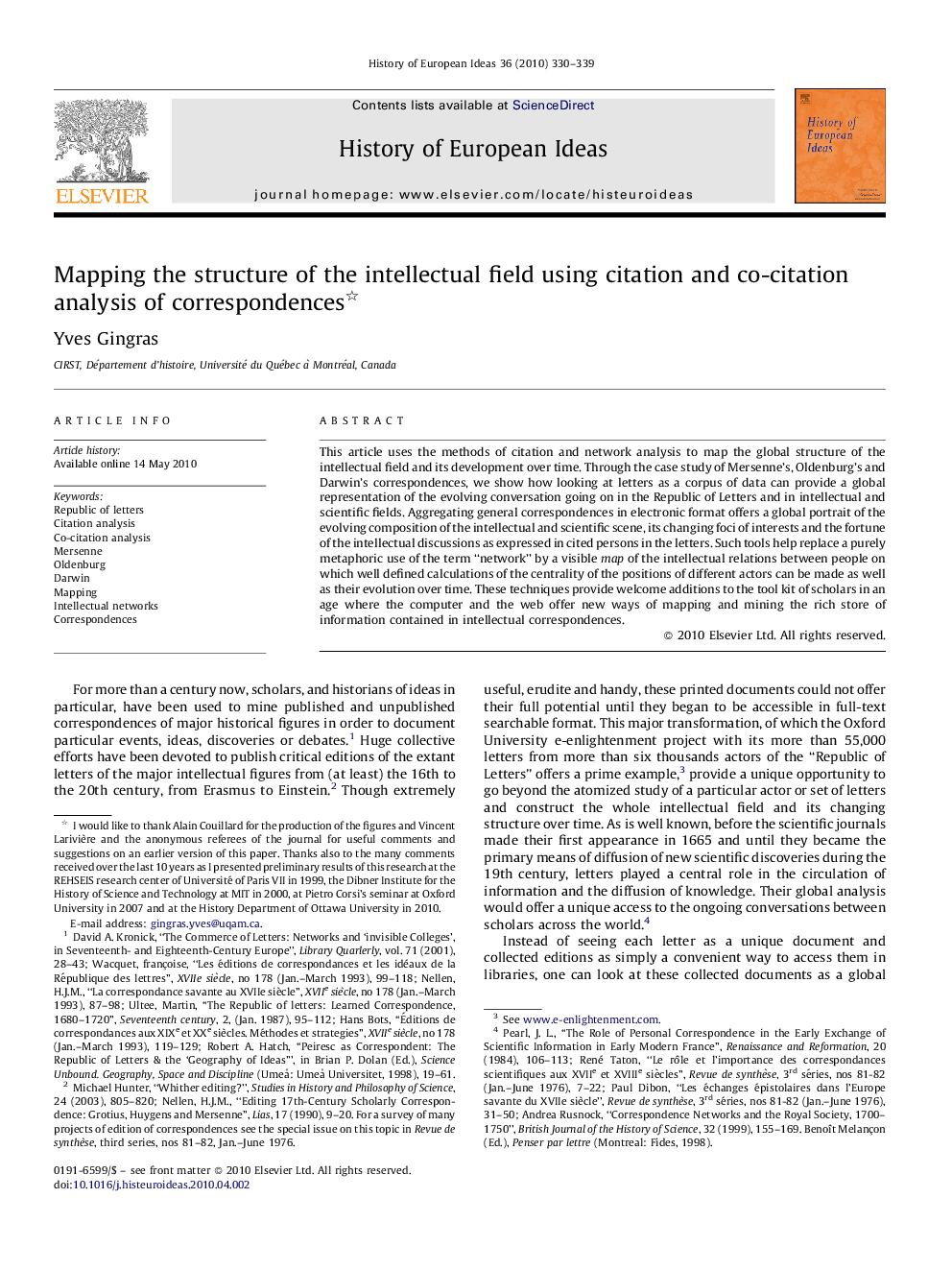| Article ID | Journal | Published Year | Pages | File Type |
|---|---|---|---|---|
| 1159036 | History of European Ideas | 2010 | 10 Pages |
This article uses the methods of citation and network analysis to map the global structure of the intellectual field and its development over time. Through the case study of Mersenne's, Oldenburg's and Darwin's correspondences, we show how looking at letters as a corpus of data can provide a global representation of the evolving conversation going on in the Republic of Letters and in intellectual and scientific fields. Aggregating general correspondences in electronic format offers a global portrait of the evolving composition of the intellectual and scientific scene, its changing foci of interests and the fortune of the intellectual discussions as expressed in cited persons in the letters. Such tools help replace a purely metaphoric use of the term “network” by a visible map of the intellectual relations between people on which well defined calculations of the centrality of the positions of different actors can be made as well as their evolution over time. These techniques provide welcome additions to the tool kit of scholars in an age where the computer and the web offer new ways of mapping and mining the rich store of information contained in intellectual correspondences.
